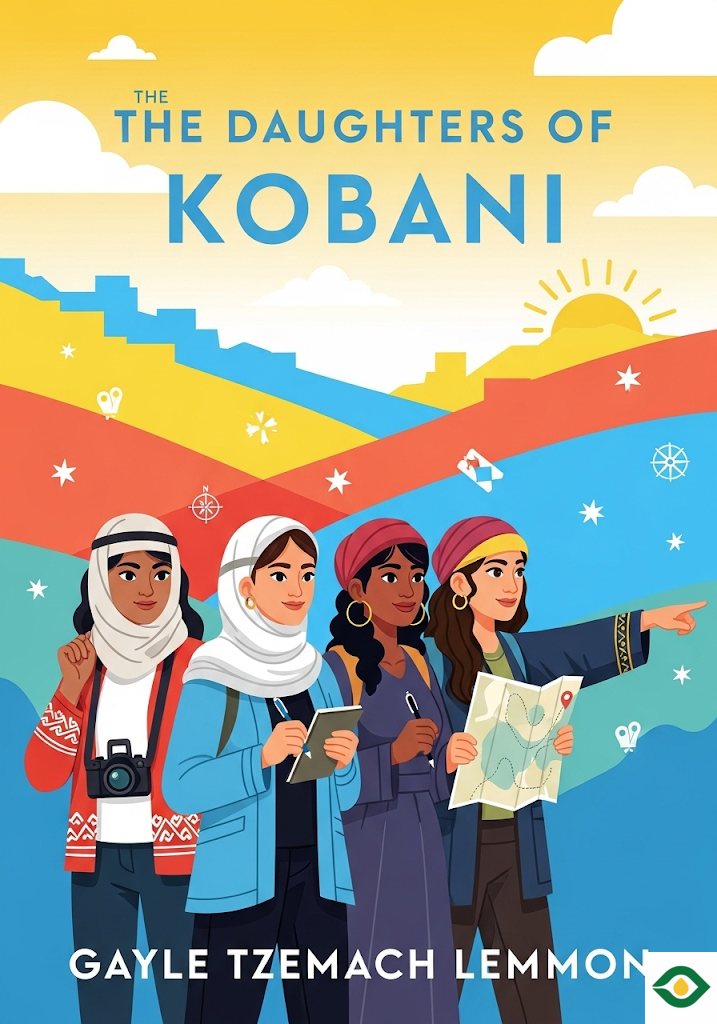Description
In the middle of the Syrian civil war, a group of Kurdish women rose from obscurity and stepped onto one of the world’s most dangerous battlefields. These women were not only fighting a brutal enemy in ISIS, but also challenging deep-rooted traditions that had long denied them equality. Their courage, sacrifices, and vision created a story unlike any other—a story of resistance, of hope, and of the power of women to reshape history.
The story begins in northeastern Syria, in a city called Kobani. By 2014, ISIS had captured large parts of Iraq and Syria, spreading terror through executions, kidnappings, and systematic abuse of women. The city of Kobani was surrounded. Many believed it would soon fall. Yet inside the city, a militia led by women prepared to fight. They were known as the Women’s Protection Units, or YPJ, and their fighters carried more than rifles. They carried a dream: that women could lead, defend, and decide their own futures.
One of the first stories that inspired the movement was that of Arin Mirkan, a YPJ fighter. Surrounded by advancing ISIS tanks, she chose not to retreat. Instead, she strapped grenades to herself, charged the enemy, and detonated them, killing herself and the fighters inside the tank. Her action shook both sides of the conflict. For ISIS, it was terrifying proof that these women would rather die than surrender. For the Kurds, it was a symbol of ultimate sacrifice and a call to fight harder.
The women of Kobani came from different backgrounds but shared common experiences of oppression. Azeema, a fiery and outspoken fighter, had grown up questioning the traditional roles forced on women. Her friend Rojda was quiet and thoughtful but equally determined, once standing up to relatives who tried to stop her from playing soccer. Nowruz, older than the others, carried the lessons her mother had taught her about never depending on men for survival. And Znarin, who had been denied both education and love by her family’s strict rules, chose the battlefield as the place to claim her freedom.
These women were influenced by the writings of Abdullah Öcalan, a Kurdish thinker who believed no society could be free if women remained oppressed. His ideas spread among Kurdish youth and inspired the creation of militias that gave women equal roles and leadership positions. For the fighters, this struggle was never just about defeating ISIS. It was also about proving that women could lead armies, command respect, and shape a new society.
When ISIS reached Kobani in 2014, the women faced their greatest test. Street by street, house by house, they fought against a better-armed and ruthless enemy. At times, ISIS controlled three-quarters of the city. Yet the women refused to give up. Snipers like Azeema became legendary, while leaders like Nowruz organized defenses that turned Kobani into a symbol of defiance.
International powers soon noticed. The United States, unwilling to send its own ground troops, needed a partner who could confront ISIS effectively. The Kurds, and especially the women-led militias, had already proven their determination by rescuing Yazidis trapped on Mount Sinjar. The U.S. began providing airstrikes, intelligence, and supplies, while the women held the ground. Together, they pushed ISIS back and eventually liberated Kobani.
The victory was historic. A small, under-equipped force of women and men had defeated the world’s most feared terrorist organization in a key stronghold. But their fight did not end there. With the formation of the Syrian Democratic Forces (SDF), Kurds and Arabs joined together under a unified command, continuing the push to retake territory from ISIS.
The battles that followed tested the women again and again. In Manbij, they crossed rivers under sniper fire and fought through booby-trapped streets. In Raqqa, the so-called capital of ISIS, they endured suicide bombers, mines, and ambushes. Each step forward cost lives, yet leaders like Rojda and Znarin grew stronger, commanding thousands of fighters. Their presence challenged ISIS’s worldview directly. For a group that enslaved women, being defeated by women was humiliating. For the world, it was proof that gender did not define courage or leadership.
When Raqqa finally fell in 2017, the women marched into Paradise Square, a place once infamous for ISIS executions. Where severed heads had been displayed, they raised their own flags. It was both a military victory and a symbolic triumph. A place of fear had become a place of hope.
Beyond the battlefield, the women also shaped politics. The Syrian Democratic Council created a constitution for their region that guaranteed women equal leadership in towns and villages. It outlawed forced marriage, protected women from abuse, and demanded equal participation in decision-making. These were radical ideas in a region where women had long been silenced.
Yet challenges remained. Turkey viewed these Kurdish groups as threats and launched attacks across the border. The future of northeastern Syria remained uncertain, with international powers shifting their alliances. But the women of Kobani had already changed the narrative. They had shown the world that women could defend cities, liberate people, and write laws for a new society.
For Azeema, Rojda, Nowruz, and Znarin, the fight was personal as much as political. They had grown up in a culture that told them their lives were meant to be small and silent. Instead, they chose to lead, to resist, and to sacrifice. Their names became symbols of possibility, not only for Kurdish women but for women everywhere who were told they could not.
The Daughters of Kobani is not just a story of war. It is a story of transformation. It is about women who refused to accept the roles written for them and instead wrote their own. Their courage lit a path through one of the darkest chapters of modern history.
Even as uncertainty lingers in Syria, one truth remains: the daughters of Kobani proved that freedom is not given, it is fought for. And when women fight for freedom, they fight not just for themselves but for everyone.





